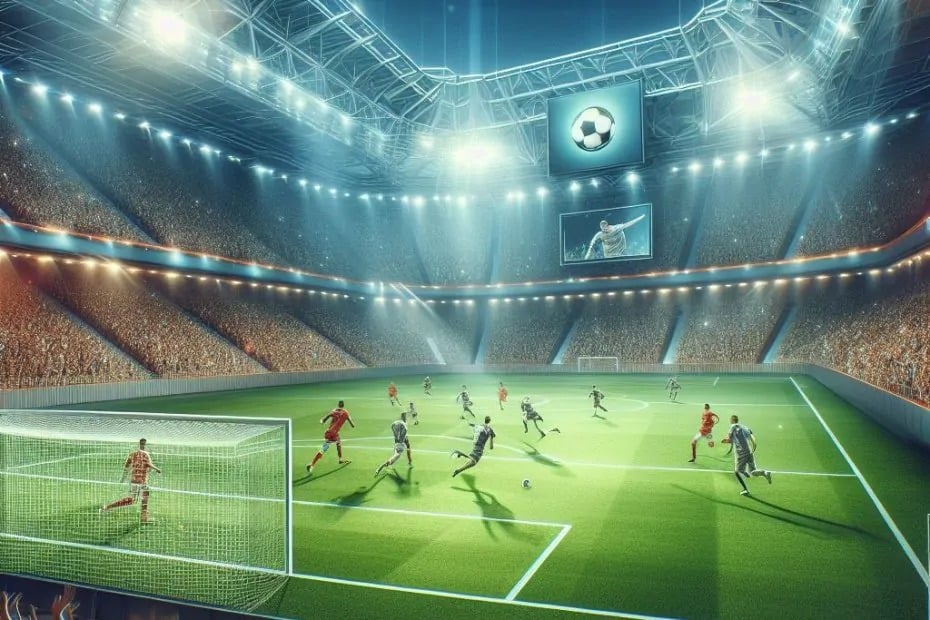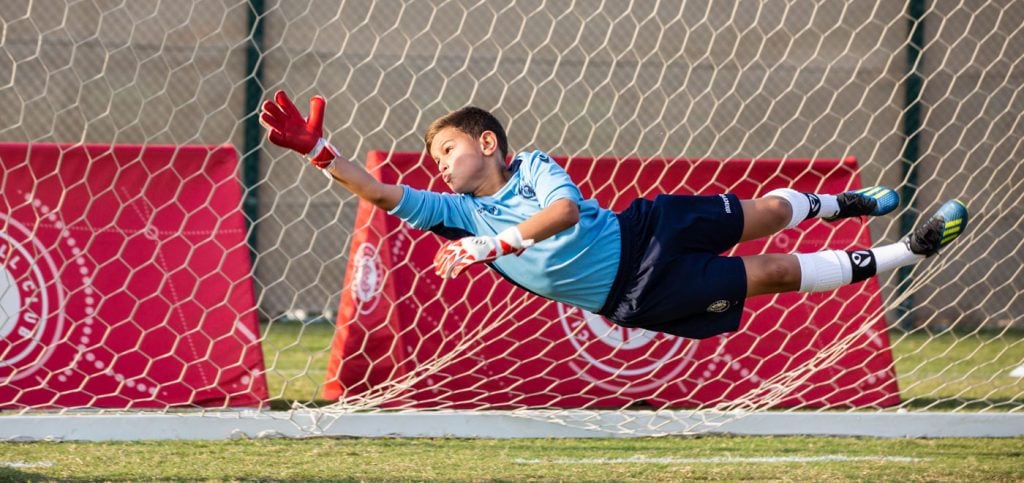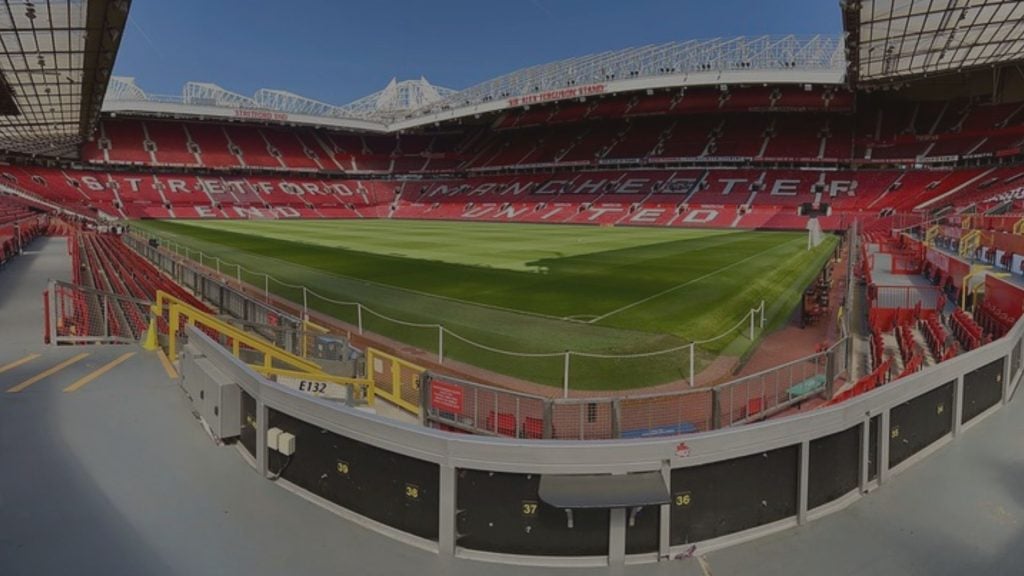
Furthermore, the introduction of Video Assistant Refereeing (VAR) has allowed for greater accuracy when deciding whether or not a player is offside. It is increasingly common in modern-day football to see goals disallowed because the forward was just a few centimeters ahead of the defender.
The implementation of semi-automated offside technology in recent international tournaments has reinforced this trend. For this reason, the International Soccer Board is currently carrying out studies to establish a new offside rule to settle this type of controversy.
Of course, changing such a major rule in football shouldn’t be taken lightly, because of its far-reaching consequences.
This is why we’re going to devote this post to discussing the potential new offside rule, how it differs from the current rule, and how it could affect the way soccer is played and understood in the future.
The new offside rule was proposed by Arsène Wenger

The first person to seriously propose a change to the offside rule was Arsène Wenger, the French former manager who led Arsenal to its legendary unbeaten campaign in the British Premier League.
Currently, Wenger is currently Chief of Global Football Development at FIFA, making him a highly credible voice in proposing such modifications.
This is why this new offside rule, already in its initial stages of testing and implementation, is known as the Wenger Law.
In fact, this new offside proposal isn’t the only change being considered by the IFAB, the body responsible for these matters, as the introduction of a Blue Card is also under consideration, although that is a topic for another day.
What is the new offside rule?
Currently, the offside rule states that a player is offside if they are closer to the opponent’s goal line than both the ball and the second-last opponent when the ball is played to them.
In simpler terms, a forward can’t have even a centimeter of their body ahead of the last defender or the ball when their teammate makes the pass. This is the current, traditional rule.
What the new offside rule is proposing is that offside should only be called when the forward’s whole body is ahead of the last defender’s body.
This would mean that referees couldn’t call offside if the players’ bodies are overlapping when the final pass is played.
Offside would only be called if the forward’s whole body is completely clear of the defender closest to the goal line.
The red lines we see drawn regularly on TV at the very front of the striker will now be drawn at the very back of the striker, as we can see in the following image:
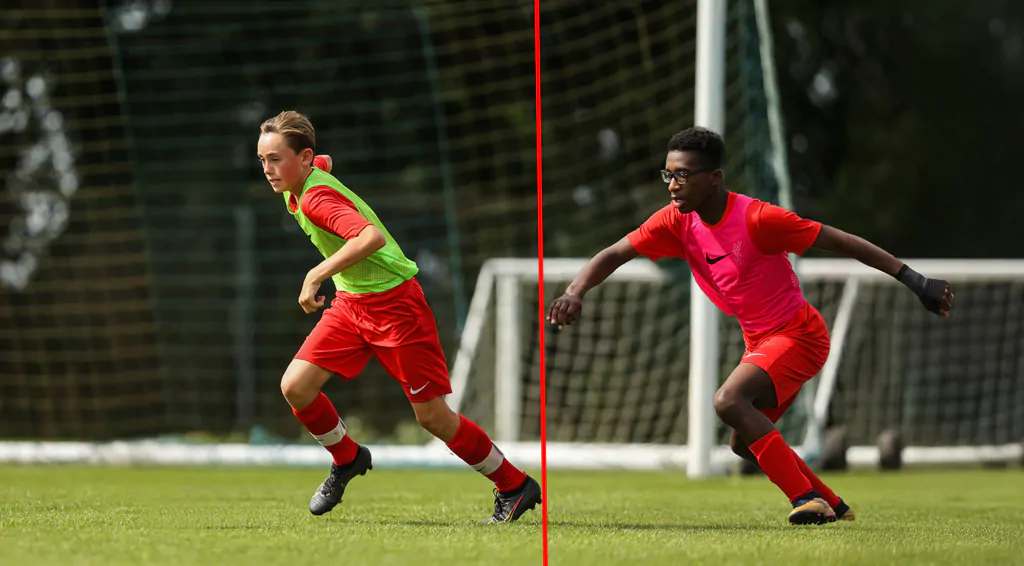
At first glance, it is immediately clear just how much this new offside rule could revolutionize football. For example, the image below was taken from an offside call in the Argentina vs Saudi Arabia match at Qatar 2022, and yet it would be completely legal under the new rule.
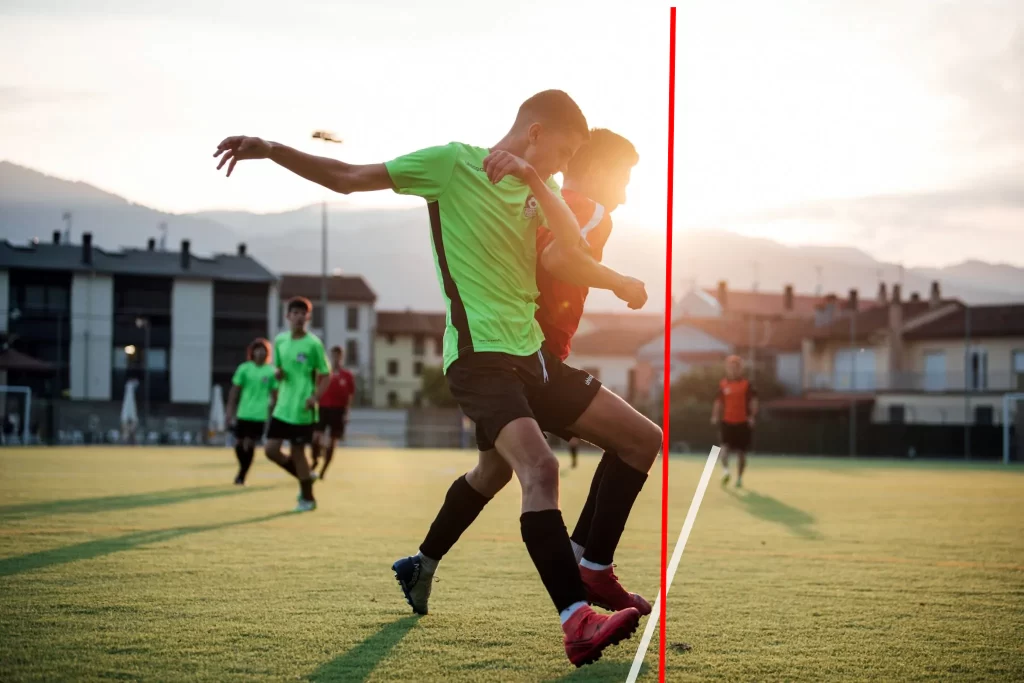
In the image above, you can see how the offside rule worked in the past. If the attacker was ahead of the defender, even by a small margin, such as an arm or a hand, offside was called without exception.
The new rule changes things considerably, as offside will now only be called when the attacker’s whole body is ahead of the last defender.
This will significantly affect the game’s dynamics, as it will allow more freedom for attackers and is likely to lead to more attacking play and goals.
Goals that would have stood under this new rule
Let’s take a trp back to La Liga 2014/2015, in the Real Madrid Barcelona clásico at the Camp Nou.
In this match, a goal by Gareth Bale was disallowed due to a prior offside call against Cristiano Ronaldo from a cross.
The cross came from the left, Cristiano Ronaldo flicked the ball with his head, and Gareth Bale struck it with his left foot, sending it into the back of the net.
The goal was disallowed because Cristiano Ronaldo was slightly in front of the last defender, Ivan Rakitic.
With the new offside rule, this goal would have stood and would have completely changed the final result of the match.
A very similar situation occurred in the clásico in 2022/2023, also at Camp Nou, where Marco Asensio had a goal disallowed for being approximately half a body ahead of the last defender.
This goal would have given Real Madrid the lead in the final minutes. However, Barcelona went on to win the game with a late goal by Kessie.
Lastly, we conclude this section of examples with the famous disallowed goal by Yépes for Colombia in the 2014 World Cup in Brazil, against the host nation.
At the start of the move, which began from a free kick, Yépes was slightly in front of the last defender, which meant the referee disallowed a goal that would have meant an equalizer for the Colombian team.
However, under the new proposed rule change, these three goals would have all stood, as the strikers’ whole bodies weren’t in front of the last defender, clearly showing how its approval could change football forever.
How would this new law affect football?
In modern football, a team’s tactical setup and positioning, particularly in defense, is becoming increasingly important.
A change like the one proposed by the new offside rule (Wenger Law) would overturn most of the current defensive systems that coaches use to counter opponent attacks.
Defenders would have to be much more cautious of forwards looking for a through pass, as the last centimeter of the defender’s body could keep the the striker onside and make the goal stand.
The first ones to suffer from this rule would be the defenders. Defending against strikers would become much more difficult. Forwards would be much more likely to create chances without having to worry about being offside.
From a more technical perspective, this rule would cause teams to set up their defensive lines much closer to their goalkeeper to avoid being caught out by the opposing forwards.
A high press would be much more risky. Defending in open spaces with your center-backs high up the pitch would be dangerous when playing against fast forwards once this law is implemented.
The number of goals per match would increase dramatically
As when the offside rule has been modified in the past, this new change would clearly increase the average goals per game.
If we are currently used to matches having an average of 2.50 to 3 goals, with this rule’s implementation that number could rise to 3.50 or 4 goals per match.
Football would have a much more attacking focus, and it would be more demanding for teams to defend with all eleven players in their own half, as weaker teams tend to do when facing a much better team.
Of course, counterattacks and quick transitions would also be more effective with this new offside rule.
Another statistic that would increase significantly is assists. With a much more permissive offside rule, midfielders would make more successful through passes, making it easier to create goal-scoring opportunities.
And these are just some of the most logical changes this modification could cause. Brilliant footballing minds like Pep Guardiola, Carlo Ancelotti, and Diego Simeone will surely find even more attacking benefits from this new law.
When would the new offside rule be implemented?
The next International Football Association Board meeting is expected to take place in February 2025.
At this summit, the implementation of the new offside rule and the aforementioned Blue Card will be decided.
Currently, the so-called Wenger Law is being used in minor league tournaments in countries like Italy and Sweden. Football academies are already getting ready to adapt to the new rules, even though they still haven’t been implemented.
These matches and the potential consequences of the new rule are currently being analyzed by experts throughout the whole trial period.
All these trials and experiments will be considered when it comes to making a final decision regarding this change.
The new law, if approved, may not be immediately implemented across all categories of professional football, leagues, and tournaments.
Something similar happened with the introduction of VAR a few years ago. Video assistant refereeing, after passing all the tests that the new offside rule is currently going through, was first implemented in U-17 and U-20 tournaments, including the women’s division.
In fact, VAR was first used in the 2018 World Cup in Russia before being introduced into domestic tournaments and the elite European leagues.
Something similar will likely happen with this new offside rule if it ever gets implemented, as it also has potential drawbacks.
Drawbacks of the new offside rule
Supposedly, the main reason behind this new proposal is to avoid all those goals – that have gone viral in recent years – that have been disallowed by a question of centimeters.
On paper, the rule seems logical, as forwards will have more leeway to ‘stay onside’ and not fall into the defenders’ offside traps.
However, if we start to think about it in a little more detail, we can see that goals will still be disallowed by centimeters. The only difference is that they won’t be disallowed because a centimeter of any part of the striker’s body is ahead of the defender’s body, they’ll be disallowed because a forward’s whole body is a centimeter ahead of the last defender.
Practically speaking, the strictness of the approach would be exactly the same, leading to the same controversies that they are supposedly trying to avoid.
So, the new offside rule will not free football from its controversial rulings, and the role of technology will be just as important.
The only thing the new rule will guarantee is that we’ll have more attacking football, with more goals and many more headaches for defenders.
In terms of fairness and transparency, there will still be a minimal margin of error for referees and technology in certain match situations.
This wouldn’t be the first time the offside rule has been changed
The basis of the current offside rule has existed since 1925. At that time, the rule stated that the forward must be behind the last defender when the pass prior to them touching the ball was made.
This means that any forwards who were level with the defender were considered offside. Legends such as Pelé, Bobby Charlton, Alfredo Di Stéfano, Ferenc Puskas, Gerd Müller all played under these rules.
It wasn’t until 1990 that the rule was modified so that forwards level with the last defender were not considered offside.
The last change to the rule was in 2003 when the idea of ‘passive offside’’ was implemented and has to do with players being deemed to be interfering with play when they are in an offside position.
Conclusion
The new offside rule aims to create a more attacking game with more freedom and goals for forwards. The other side of the coin is that it will make a defender’s job far more difficult.
To sum things up, a player will be considered to be in an offside position only if their whole body is ahead of the last defender’s body. If any part of their body overlaps with the last defender, they will be considered to be onside and permitted to be involved in the move.
Key points about the new offside rule:
- It was proposed by former coach Arsène Wenger.
- It is already being implemented in minor tournaments in order to assess its implications.
- The IFAB will take a decision regarding its introduction into professional football in February 2025.
- It would completely revolutionize football and change team tactics.
- It will increase the number of goals per match.
However, only time will tell whether this change will be beneficial or detrimental to soccer.


